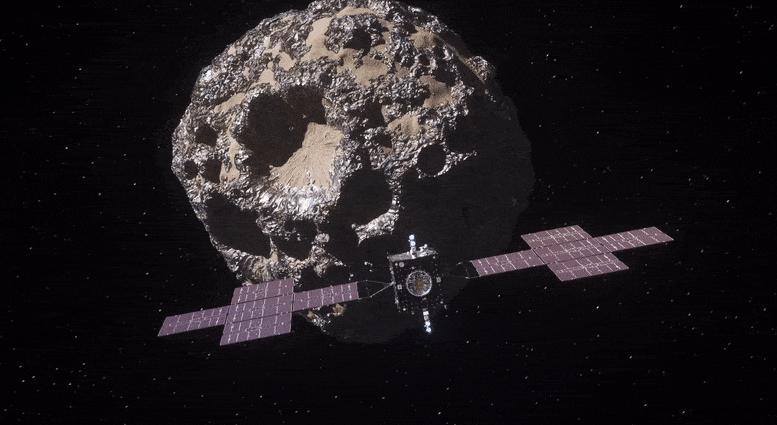
Psyche is a NASA mission that will explore a 140-mile-wide (225 kilometers) metallic asteroid called 16 Psyche.
The mission launched on Oct. 13, 2023, at 10:19 a.m. EDT (1419 GMT) atop a SpaceX Falcon Heavy rocket from Kennedy Space Center in Florida.
No spacecraft has ever visited an object like 16 Psyche, which is thought to be the exposed core of a demolished planet. The mission will have a big impact on astronomy.
Along with the Lucy mission, which launched on Oct. 16, 2021, and will visit primordial asteroids near Jupiter, Psyche was approved in January 2017 as part of NASA's Discovery Program. "This is what Discovery Program missions are all about — boldly going to places we've never been, to enable groundbreaking science," Thomas Zurbuchen, associate administrator for NASA's Science Mission Directorate in Washington, D.C., said in a statement at the time.
Psyche: The targeted metal asteroid
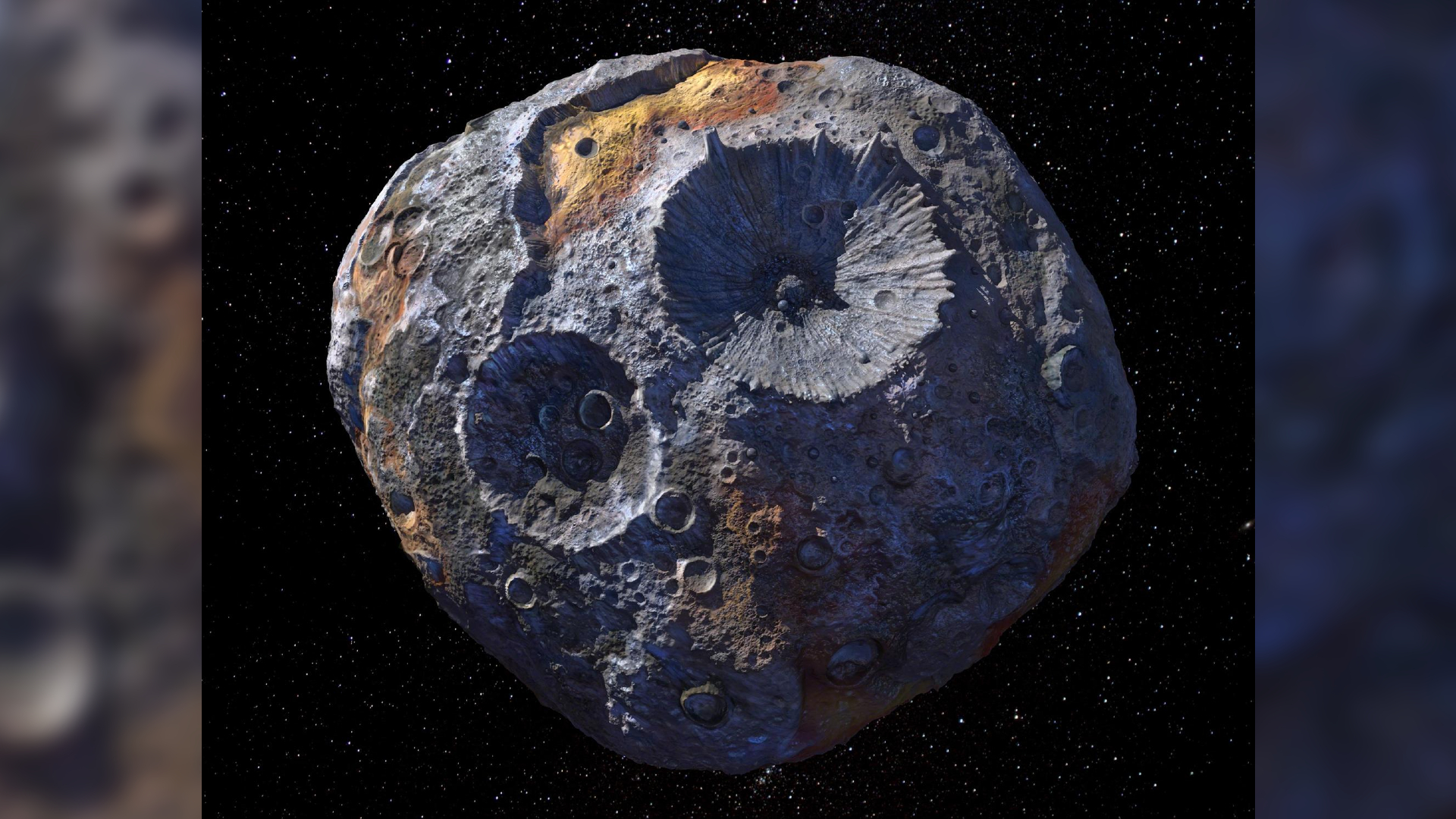
The asteroid 16 Psyche, or simply Psyche, was only the 16th asteroid ever discovered, according to Arizona State University (ASU). The space rock was spotted in 1852 by Italian astronomer Annibale de Gasparis, who named it for the ancient Greek goddess of the soul.
Psyche has a mass of about 440 billion billion pounds (220 billion billion kilograms), making it 0.03% the mass of Earth's moon, according to a 2002 paper in the journal Astronomy and Astrophysics. It's the 11th-most-massive known asteroid in the solar system, though it's only a few hundredths the mass of behemoths such as Ceres and Vesta.
Unlike most bodies in the solar system — which are composed of mainly rock, ice or gas — the Massachusetts-size Psyche is mostly metal. It is up to 95% nickel and iron, a composition similar to that of Earth's core. That metallic nature makes Psyche a compelling subject of study as researchers speculate about how the asteroid could have formed.
Related: Metal asteroid Psyche has a ridiculously high 'value.' But what does that even mean?
In one hypothetical scenario, 16 Psyche was once part of a protoplanet in the early solar system whose internal layers separated into a rocky mantle and an iron core, according to ASU. Multiple violent collisions billions of years ago may have cracked this entity open and stripped away its exterior, leaving only a misshapen metal lump behind. Much of the Psyche spacecraft's mission will entail scanning the asteroid for clues that either support or reject this story.
When will Psyche arrive?
The Psyche spacecraft is due to arrive at the metallic asteroid 16 Psyche in August 2029.
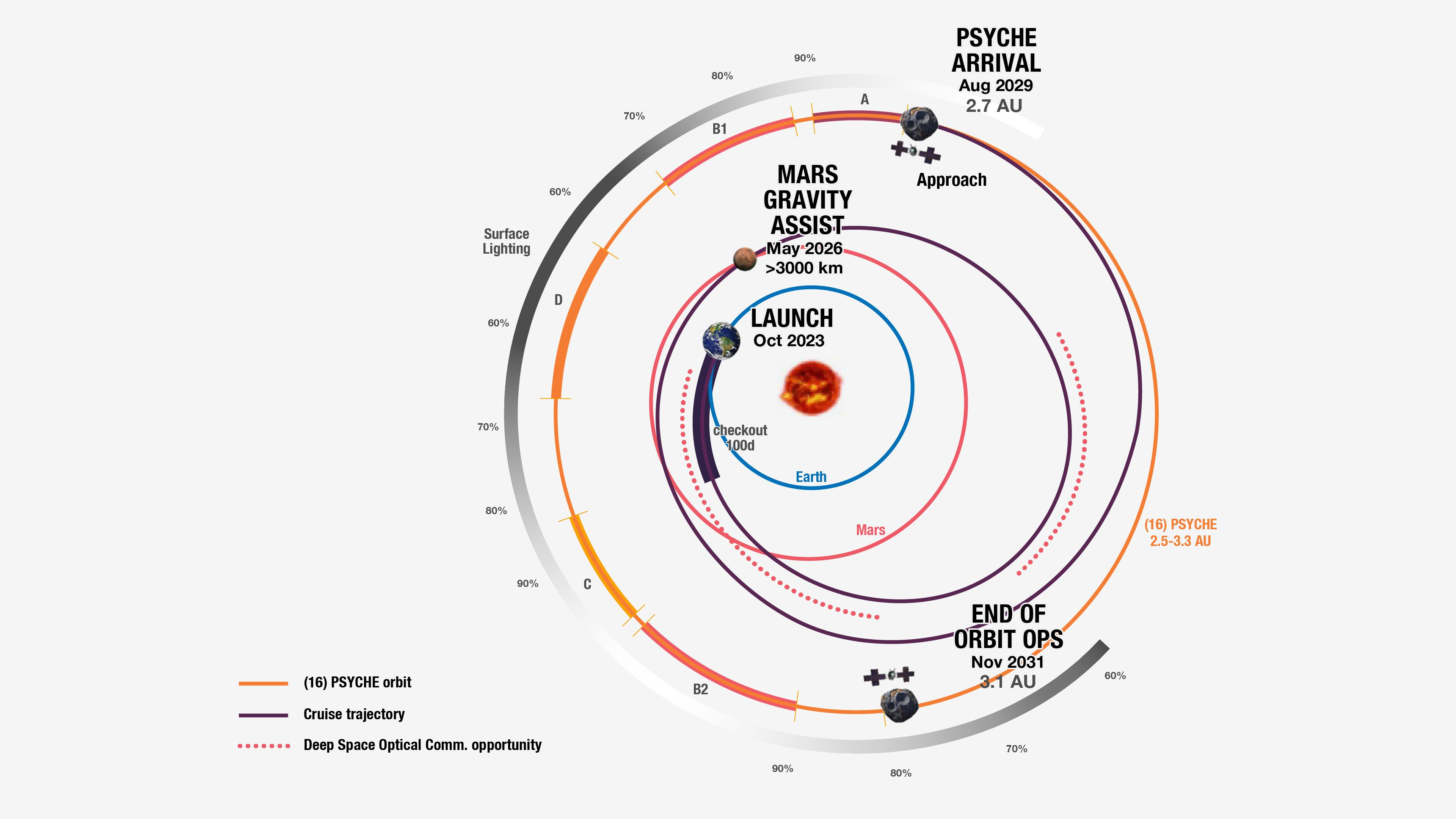
Psyche: The NASA spacecraft
NASA's Psyche probe is 81 feet (25 meters) long and 24 feet (7 m) wide, making it roughly the size of a tennis court with its solar panels extended, according to ASU. The body of the spacecraft, where all its instruments are located, is about as big as a golf cart.
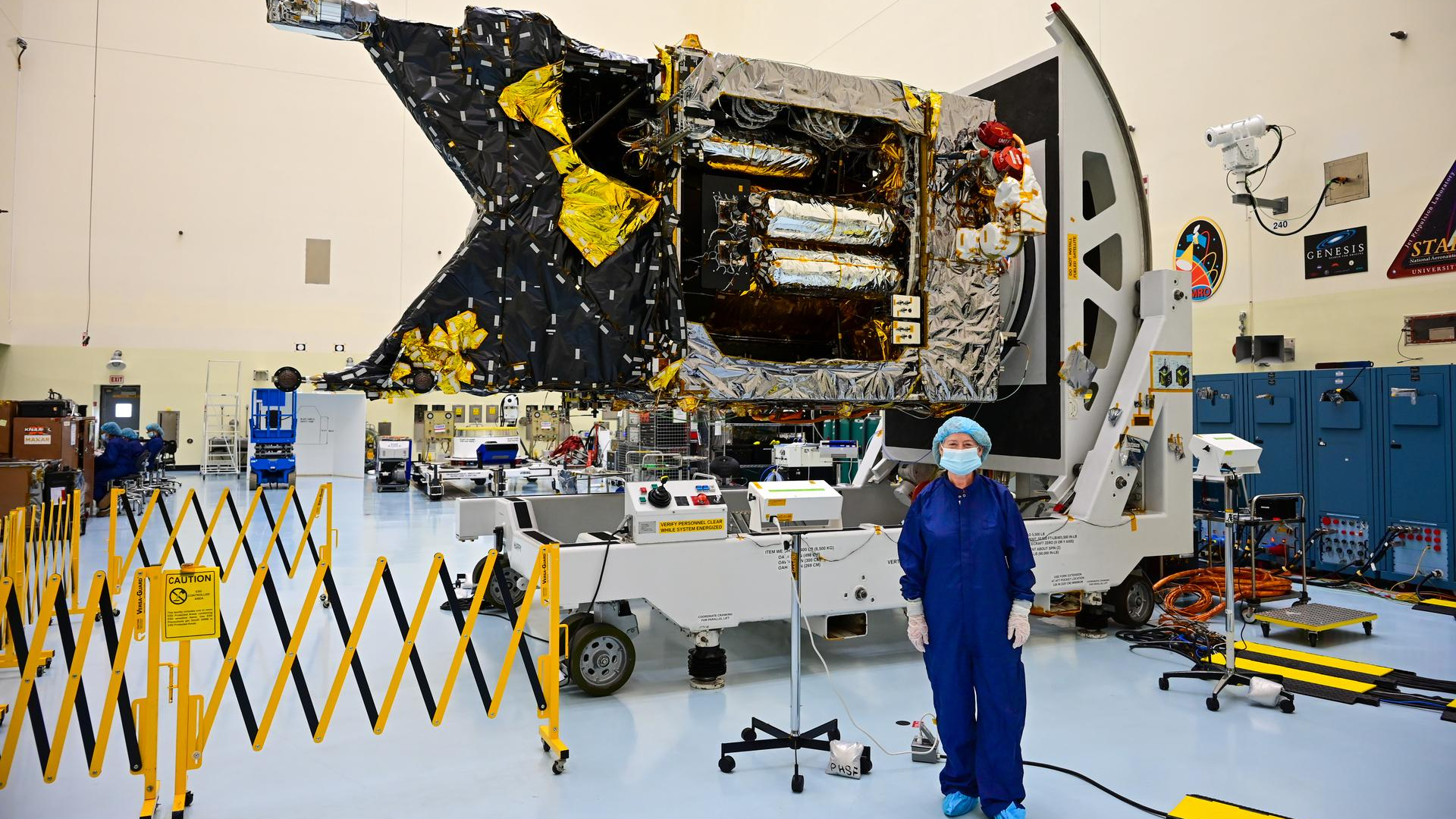
The spacecraft carries several instruments. According to ASU, they include two high-resolution cameras and a spectrometer to determine the asteroid's composition. In addition, Psyche sports a magnetometer to check if the asteroid has a remnant magnetic field, as well as an instrument to measure the space rock's gravitational field with high precision. The spacecraft is also equipped with sophisticated new laser communication technology that NASA hopes to use on future missions.
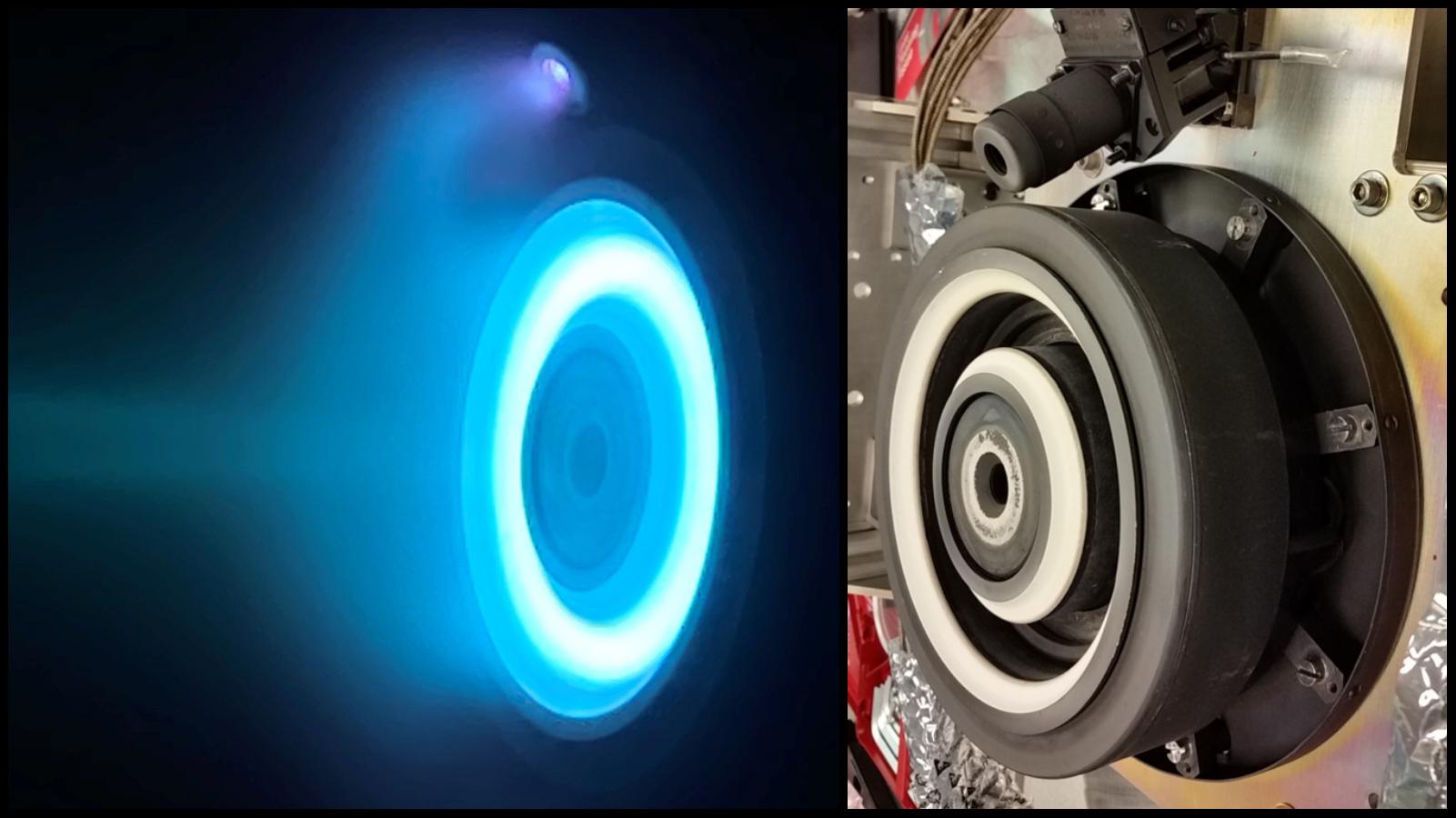
The original mission plan calls for the Psyche spacecraft to spend 21 months orbiting the asteroid while capturing the first-ever images of a mainly metal body. Using its instruments, the probe will map and study the asteroid to help researchers determine how it came to be.
Data from Psyche will help astronomers figure out how terrestrial planets form, according to NASA's mission overview. It is difficult to observe the core of a rocky planet such as Earth because the core lies far below the planet's mantle and crust.
By studying 16 Psyche up close, researchers hope to better understand how collisions, accretion and time work to create worlds like our own.
Psyche mission expert Q&A
We asked Simone Marchi, staff scientist at Southwest Research Institute a few questions about the Psyche mission.
Why do scientists think Psyche used to be the core of a planet or protoplanet?
We think Psyche may be a core (or part of it) of a protoplanet because of its peculiar physical properties, as inferred from telescopic observations. The list of oddities includes a high density — compared to most asteroids — and a distinct way in which solar light is reflected off Psyche's surface. These observations point to a high concentration of metal.
How will we learn about Psyche's past and formation from the current asteroid?
Psyche — the spacecraft — carries a suite of instruments that will allow us to determine its surface composition, density, and internal structure. If indeed we find lots of metal, this could confirm that Psyche was once a core of a protoplanet. Surface morphology will also help us unravel its history among other asteroids, for instance, how many times and to which magnitude, Psyche was shaken by violent collisions.
What might we learn about the core of Earth and other rocky planets from Psyche?
Earth formed by the accretion of a great number of protoplanets. Each one of them could have gone through processes that also occurred to Psyche. Only that Psyche was eventually not accreted by a larger planet. So, looking at Psyche today is a bit like going back in time when the Earth was forming and being able to study one of its building blocks.
Why aren't there more asteroids like Psyche, that is, mental-rich asteroids or even exposed planetary cores, in our solar system?
There are a few other asteroids that could be similar to Psyche. But Psyche is the largest and best-studied of this bunch, and that is why we are going there.
Additional resources
For more information about Psyche's trajectory and why it matters that the mission missed its optimal launch window, head to this article from WIRED. To read more about the literal goldmine that an asteroid like Psyche could represent, try this article from Smithsonian Magazine. Or, if you'd like to learn more about the people behind the mission, check out "A Portrait of the Scientist as a Young Woman," a 2022 book by planetary scientist Lindy Elkins-Tanton, Psyche's principal investigator.
Bibliography
Asteroid 16 psyche | psyche mission—A mission to a metal world. (2021, October 2). Psyche Mission; Arizona State University. https://psyche.asu.edu/mission/the-asteroid/
Greicius, T. (2021, December 22). Psyche overview [Text]. NASA. http://www.nasa.gov/mission_pages/psyche/overview/index.html
Kuzmanoski, M., & Kovačević, A. (2002). Motion of the asteroid (13206) 1997GC22 and the mass of (16) Psyche. Astronomy & Astrophysics, 395(2), L17–L19. https://doi.org/10.1051/0004-6361:20021444
Northon, K. (2017, January 4). Nasa selects two missions to explore the early solar system. NASA. http://www.nasa.gov/press-release/nasa-selects-two-missions-to-explore-the-early-solar-system
Psyche spacecraft instruments & science investigations. (2022, May 5). Psyche Mission; ASU. https://psyche.asu.edu/mission/instruments-science-investigations/







